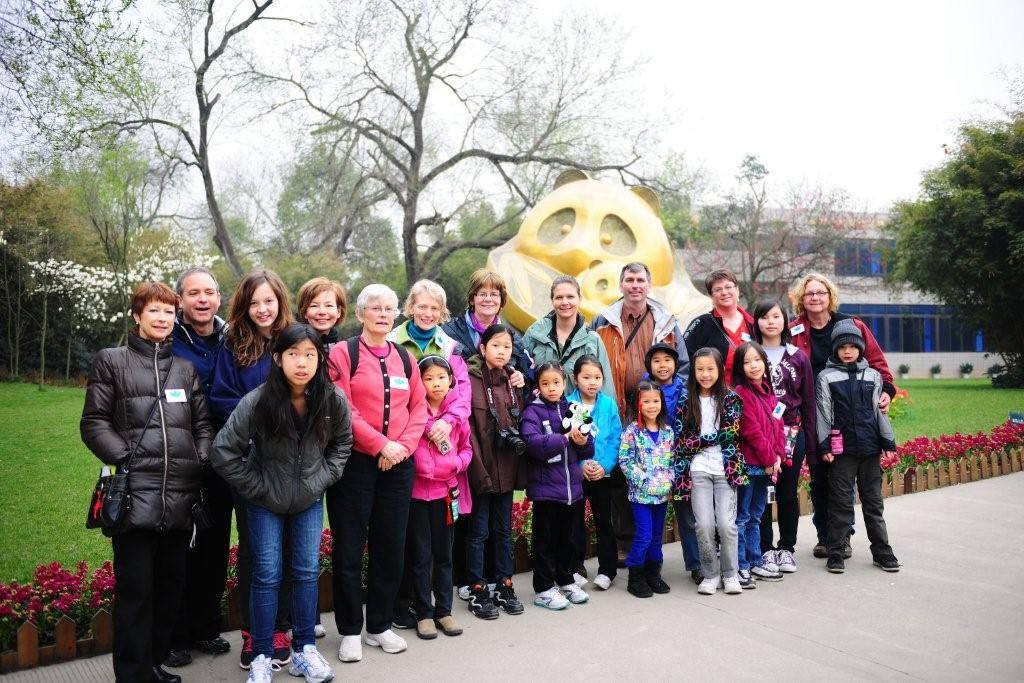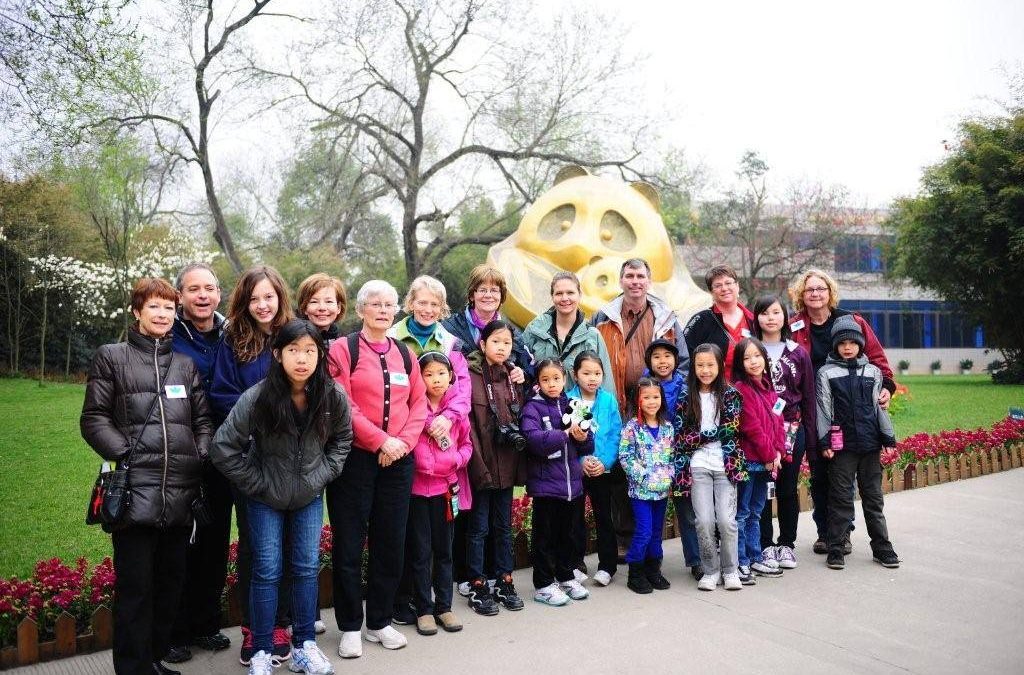Projects to Prepare: Start Conversations with your Adoptee

Preparation Tips and Projects for a Homeland Visit by Iris Culp,Homeland Heritage Tour Program Director, Lotus Travel, Inc
Get a realistic preview: You just put that, and what I usually tell people is to Google Earth your child’s hometown area or places you plan to visit and get a sense of what it looks like today. Then, include a phrase along the lines of “Don’t expect anything to look like it did when you traveled on an adoption trip,” because China is growing at an exponential rate and modernizing.
Anticipate the change: I’m going to go deeper into this. Just like your adopted child—”children” have grown and changed, so they no longer resemble their baby photos. Realize that China’s economic rise and growth has been exponential. For example, in the last approximately three decades, the Chinese government has intentionally made efforts to invest in infrastructure and higher education to expand the middle class. For instance, 20 to 30 years ago, between 3% and 4% of the Chinese population was middle class.
Today, well over 80% of their population is middle class. They’ve successfully lifted almost 800 million people out of poverty. Just like your child has not remained the same, neither has China.
Cultural Norms: Discuss how different societies have differing cultural norms. Find out what is considered rude in China? What is considered rude in America? What are the norms for dating in each country. At what age does dating begin? Is it dating, or something else, like “courting”. What is considered an appropriate display of affection in public in each country?
Country & Age Comparisons: What are some of the differences in the daily life of a 10 year old (or however old YOUR child is) and a 10 year-old in America. How many hours are spent in school each day? How many hours in homework? How many in extracurricular activities? How many hours helping out the family? What are typical expectations placed on a 10-year old in China? How does that compare?
City Series: Do a “China city” series – On a certain Friday night of the month, pick a China city in which you are interested, or one that is on your itinerary. Study it in depth. Get photos of the city, sites you are planning to see. Look for online photos of places you may visit there such as museums, parks or historical sites in that locale. Find a US city on the same longitude. Compare what is the same about that city discuss what might be different. “Google Earth” the city and see what you can find.
Fun Trivia Facts: Collect “fun facts” about China and create your own game show night or personal quiz program. Do you like “Jeopardy”, or “Duel” – create your own. How many people live in China? How many tv’s are in China? How many cell phones? What does the color red symbolize? What color is used at funerals? Name 3 countries that border China. You get the idea. Make it fun facts that your kids enjoy.
Pre-Trip Photo Project:
Before your heritage trip, create a fun and meaningful photo project to help your child build excitement and familiarity with the journey ahead. Instead of using a traditional photo album, gather printed images from magazines or online sources of places you’ll visit—such as the Great Wall, Tiananmen Square, or the Panda Research Center. These can be arranged on a poster board, used as a collage for a travel-themed wall, or even printed as a decorative wallpaper. Leave space next to each image where you can later add your own photos from the actual visit. Once you’re back home, print out your personal photos from those sites and add them to the project, along with a few notes about what you experienced and how it compared to what you expected. This creative project not only prepares your child for what’s ahead—it also becomes a keepsake filled with reflections and memories.
SWI Project: Research your child’s SWI information. What is the name of the director? Find and show photos, if available. How many babies are usually cared for there? Is it a home for the aged, disabled as well as orphaned children? How many disabled children and what are there special needs? How many nannies work there? What information is available about the SWI? (This will vary a lot of course). Discuss what your family might see during the SWI visit. What, if any, gifts for children or director might be appropriate? Discuss ahead of time and make a plan. Consider doing a scrapbook of photos of your child from their time at SWI to current time.
Lifebook: Complete a lifebook for your child. Join the “China lifebooks” yahoo group or attend a lifebook workshop and get inspiration to write a lifebook for your child.
Check cultural IQ of China: Do a “Between the Cultures” night. Go online and check your cultural “IQ” of China. Or if your family loved the game show format, do it that way. Have some more fun and compare traditions in America to traditions in China. See if you can find 10 that are a perfect match and 10 that are total opposites. (Hint: think which society values elders and which society prizes youthfulness.) Whoever gets to ten first, wins the evening prize.
Travel planning Book: List out everything you plan to see. Make a list of all the essentials, such as passports and travel documents, essential clothing, camera gear etc. Make a packing list. Make a travel “scavenger” list of what you want to pick up. (i.e. a souvenir from peddlers on the Great Wall, a pebble from your SWI visit, a paper menu from a restaurant visit, a pearl ring from Guangzhou, etc.) Check out the typical weather patterns for the locales you plan to visit and find comparable cities in the US.
Asian Video Night: Have China video night series, and invite travelling friends or family. Have a sleepover with it and pop some popcorn, or just do family sleeping bags in the living room. Find some good documentaries about China and find some entertainment films. Discuss what you’ve seen after watching the films. Allow time for your kids to ask questions of you. Take time and listen to their questions. See if they have any concerns about travelling. Make sure you discuss your return home portion of the trip when you discuss the trip’s agenda.
China Theme Party: Send out Chinese invitations with a simple character stamp on folded paper or send out e-vite invitations with a Chinese theme. Encourage everyone to dress up for the party. Decorate for the party. Red is a celebration color, so hang lanterns, put some chopsticks in a vase. Make some paper cuts for walls and windows.
Make Chinese food (or order take out). Pot stickers, rice, spring rolls, almond cookies, fresh fruit and juices make a great light party meal. Dress up in a cheongsam (mandarin collared dress) or jacket and pants if you have them. Otherwise, wear red, gold, or black.
Understanding the Differences in Secondary Education: U.S. vs. China: Secondary education in China places intense emphasis on academic performance, especially in preparation for the Gaokao—China’s National Higher Education Entrance Examination. Known as one of the toughest exams in the world, the Gaokao determines university placement and can shape a student’s entire future. The pressure is so extreme that some students resort to using IV drips to stay focused, delay their menstrual cycles with contraceptives, and endure chronic sleep deprivation during study months.
In contrast, while U.S. high school students also prepare for standardized tests like the SAT or ACT, the process tends to be less physically and emotionally taxing, with a broader focus on extracurriculars, essays, and a holistic admissions approach.
Learn more about the Gaokao and other global exams here:
🔗 Top 10 Toughest Exams in the World
Resources to Support Preparation Activities
Websites:
http:www.askasia.org – An educational website for students and teachers covering 30= countries that comprise Asia.
http://www.kepu.net.cn/english – The Science Museums of China website (English) Note: check out the “panda-cam” on this website!
http://www.ocanational.org – OCA is a national organization dedicated to advancing the social, political and economic well-being of Asian Pacific Americans in the United States
Video Resources:
Homeland trip experience by Lotus Tours, www.lotustours.net “Cherished Escapades”
A documentary following a trip to China by Tai-Kai Productions – “Found in China”
Reading Resources
Books for Parents/ Adults:
LifeBooks: Creating a Treasure for the Adopted Child, by Beth O’Malley
Adoption Lifebook: A Bridge to Your Child’s Beginnings, by Cindy Probst
Wuhu Diary: On Taking My Adopted Daughter Back to Her Hometown in China , by Emily Prager
Wild Swans: Three Daughters of China, by Chang, Jung
International Adoption from China: Examining Cultural Heritage and Other Post-adoption Issues by Jay W. Rajewski and Jacy L. Rajewski
Wanting a Daughter, Needing a Son: Abandonment, Adoption, and Orphanage Care in China, by Kay Johnson
Books for Children:
When You Were Born in China: A Memory Book for Children Adopted from China, by Sara Dorow and Stephen Wunrow
Kids Like Me In China, by Ying Ying Fry and Amy Klatzkin
Let’s Talk about it: Adoption by Mr. Fred Rogers
I Love You Like Crazy Cakes by Rose A. Lewis
Before I Met You: A Therapeutic Pre-Adoption Narrative Designed for Children Adopted from China, by Doris Landry
Forever Fingerprints: An Amazing Discovery for Adopted Children by Sherrie Eldridge
If the World Were a Village: A Book About the World’s People, by Shelagh Armstrong
Multicultural Book Sources:
http://www.shens.com Shen’s Bookstore has thousands of books related to multicultural issues for children in grades K-8.
“PACT’s Multicultural Book Source: An opinionated guide rates hundreds of books, including those from specialty adoption published and it highlights hard-to-find resources for a wide range of families.

